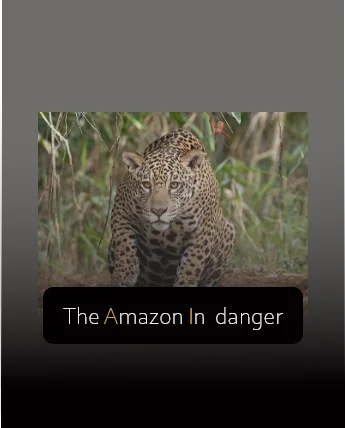
Author: Daniela Ruiz – Data Engineer
Mining concessions, increase in hydroelectric dams, construction of roads, expansion of agriculture, cattle ranching, deforestation and changes in the legislation of protected areas are just some of the problems that indicate that the Amazon is In danger. On the other hand, artificial intelligence (AI) has been one of the most disruptive technologies in recent years and has been implemented in multiple areas, from the automotive industry to healthcare. In this sense, AI is not far behind when it comes to caring and preserving the Amazon.
Why should we care about it?
As you may know, Amazon is called the “green lung of the Earth”. It is the world’s largest Rainforest, covering 6.7 million km2. According to the World Wildlife Fund (WWF), nearly 60% of the Rainforest is in Brazil, while the rest is shared among eight other countries (Bolivia, Colombia, Ecuador, Guyana, Peru, Suriname, Venezuela and French Guyana)1.
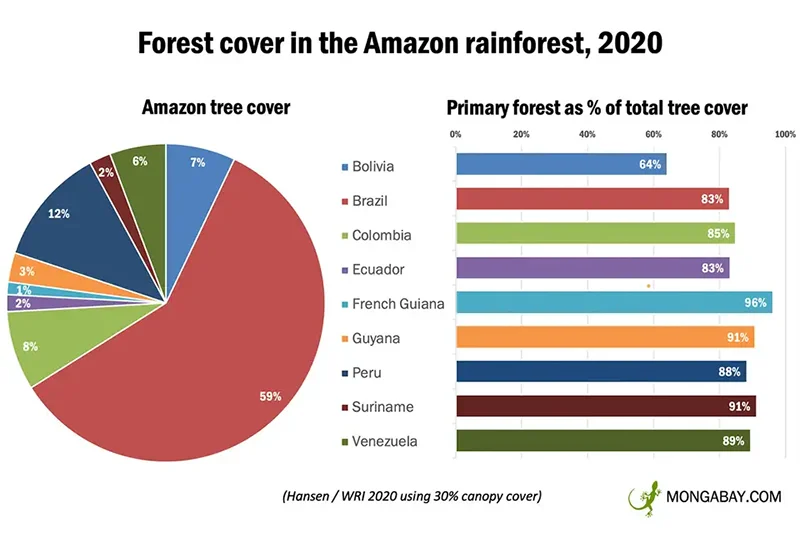
The Amazon is home to an incredible array of biodiversity. Just to give an example, you can find more types of ants on one tree in the Amazon than you can in some whole countries!2 Additionally, the Amazon is not only a vital source of water, food, medicines, and wood, but it also plays a critical role in stabilising the climate.
The trees in the Amazon release 20 billion tons of water into the atmosphere daily, playing a critical role in global and regional carbon and water cycles3. The Amazon Rainforest is also home to many indigenous communities that depend on it.
Despite its importance, the Amazon is in danger of reaching an irreversible point. And why is this so critical? We cannot tackle the climate crisis without the Amazon’s vital life-sustaining role. The Amazon rainforest is endangered due to a combination of factors, including:
- Deforestation: The Amazon rainforest is being rapidly cleared for commercial purposes such as agriculture, mining, and logging, which results in the destruction of crucial habitats and the release of large amounts of carbon into the atmosphere. Another major problem is the rising global demand for meat, leading Brazil to become the world’s biggest beef exporter. So yes, as you are imagining, the Amazon Rainforest is also cleared for cattle production.
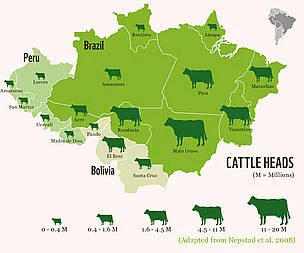
- Climate change: Deforestation in the Amazon contributes to climate change, as the forest plays a crucial role in absorbing carbon dioxide from the atmosphere. Climate change is also causing droughts and fires, exacerbating deforestation.
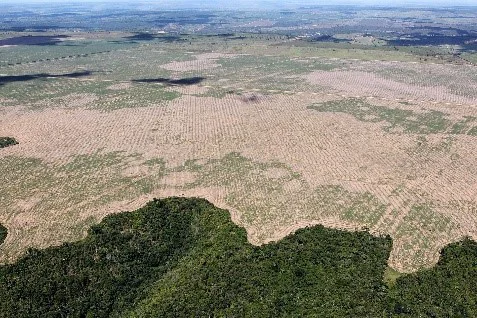
- Illegal logging and mining: Illegal logging and mining are significant contributors to deforestation in the Amazon, and they often operate in protected areas where they cause significant environmental damage.
- Wildlife trafficking: The Amazon is home to a wide range of unique and endangered species, and wildlife trafficking is a significant problem in the region.
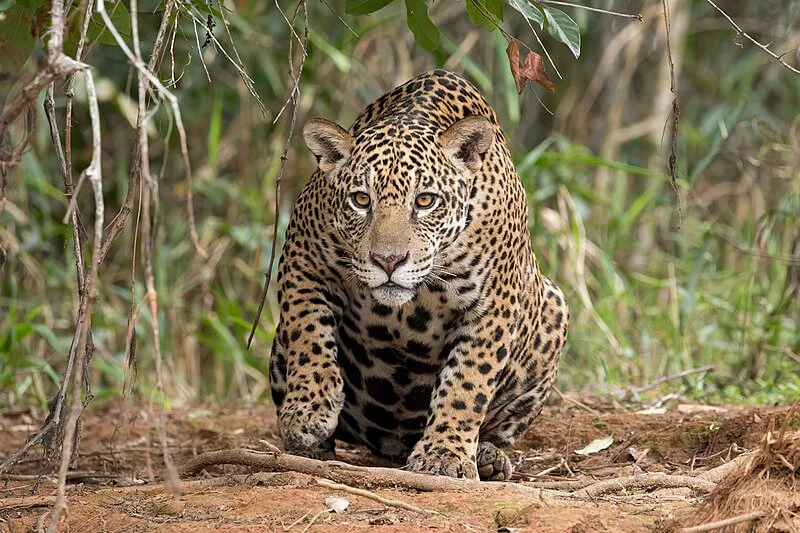
- Land conflicts: There are ongoing conflicts between indigenous communities and companies trying to exploit the resources of the Amazon, leading to displacement and violence.
- Agricultural expansion: Large-scale agriculture is expanding in the Amazon, leading to the destruction of forests and displacement of indigenous communities.
As you can see, all these factors are interconnected and exacerbate one another, leading to a vicious cycle of destruction and endangerment of the Amazon rainforest. Still, one of the main problems is deforestation (either caused by human activity or climate change). The loss of the Amazon rainforest would have significant impacts on the global climate, biodiversity, and human communities that depend on the forest for their livelihoods and way of life.
Is there any solution to these problems?
Great news! Yes, there are solutions. Nowadays, many organisations are helping the Amazon, such as World Wildlife Fund or One Tree Planted. Additionally, technology, specifically Artificial Intelligence, is being used to support the Amazon Rainforest in some ways that will be explained below.
But the truth is AI is not a magic wand, it should be seen as a tool that can help us solve problems and improve our lives, but it is not a cure-all or a magical solution to every challenge we face. To address the situation in the Amazon, a concerted effort from governments, local communities, and international organisations is necessary. In addition, there must be strict regulatory measures to preserve protected areas in the Amazon.
Having said that here are some solutions for the Amazon in danger powered by AI, which are currently being implemented:
- Mapping and monitoring: One of the essential things that can be done to prevent deforestation is to keep track of where it’s happening. AI could be used to analyse satellite imagery and detect changes in forest cover, allowing conservation organisations to focus their efforts on at-risk areas.
For example, to address this problem, the international NGO Rainforest Foundation has developed an AI application called “Forest Watcher” that uses satellite imagery to monitor deforestation in real-time. The application uses a machine learning algorithm to analyse satellite images and detect changes in vegetation cover. In addition, the application also uses field data collected by local communities to improve the accuracy of deforestation detection.
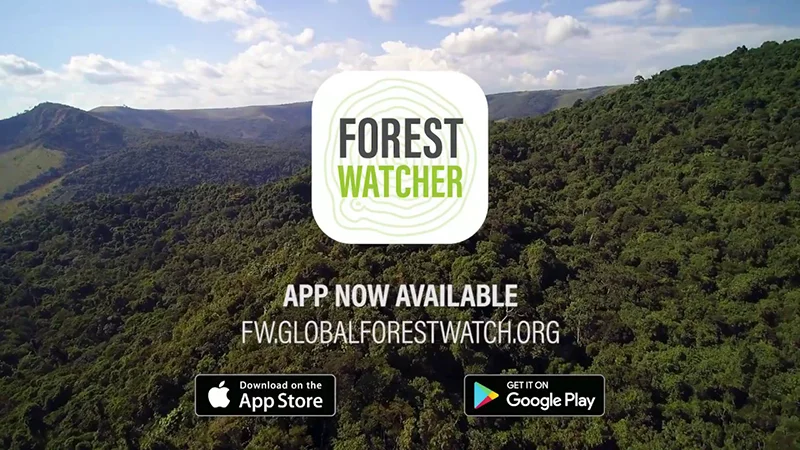
Taken from: https://i.ytimg.com/vi/fjp0Ikw3gNQ/maxresdefault
- Predictive modelling: By analysing historical data on deforestation rates, climate patterns, and other environmental factors. AI could be used to create models that predict where deforestation is most likely to occur, which species are taken out of their habitat, and how agriculture will impact the soil in the future. This information could help guide policy decisions and conservation efforts.
- Enforcement: Land conflicts, wildlife trafficking, illegal logging, and deforestation often go undetected because they happen in remote areas. AI-powered drones with computer vision patrol these areas and identify criminal activity, allowing law enforcement agencies to take action to help fauna, flora and natives in the zone.
- Education and outreach: AI could be used to create interactive educational materials that teach people about the importance of the Amazon rainforest and the potential impact its loss could have on the environment. This could raise awareness and encourage more people to take action to protect.
Conclusions
In conclusion, the Amazon rainforest is in constant danger due to a combination of factors such as deforestation, climate change, illegal logging and mining, wildlife trafficking, land conflicts, and agricultural expansion. The loss of the Amazon rainforest would have significant impacts on the global climate, biodiversity, and human communities that depend on the forest. However, there are solutions for deforestation in the Amazon powered by AI, such as mapping and monitoring, predictive modelling, enforcement, and education and outreach. AI can be a powerful tool to aid in conservation efforts.
Still, it is essential to remember that it is not a magical solution. A concerted effort from governments, local communities, and international organisations is necessary to address the problem in the Amazon. By working together and using technology responsibly, we can help preserve the Amazon rainforest for generations.
REFERENCES

Daniela Ruiz – Data Engineer
EQUINOX
what’s ai?
Discover what is AI and how it will become revolutonary in the industry
